TBI Blogs: Did You Know India’s Disabled Will Get Access to ₹855 Crore Under Union Budget 2017?
The last Census pegged the number of disabled individuals in India as over 21 million. With such a sizeable chunk of the population in need of assistance, schemes like the ‘Accessible India’ campaign need effective funding to be able to make a difference.
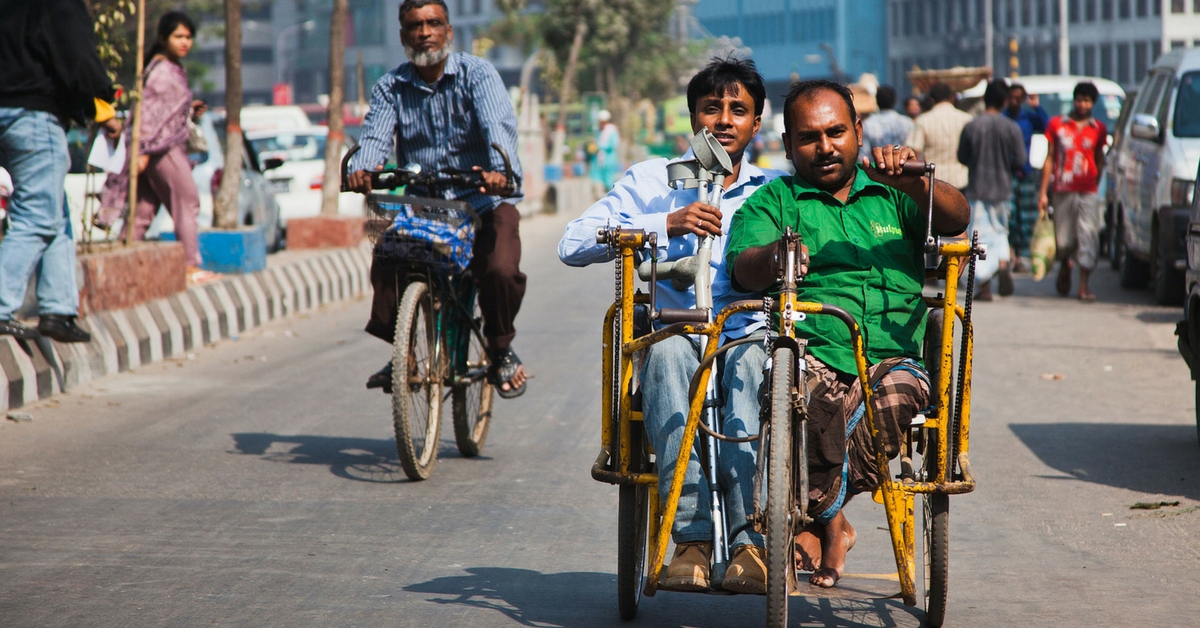
The last Census pegged the number of disabled individuals in India as over 21 million. With such a sizeable chunk of the population in need of assistance, schemes like the ‘Accessible India’ campaign need effective funding to be able to make a difference.
For the last one year, it has been projected that the government is pursuing the social welfare agenda for the differently-abled on a mission mode. From the ‘Accessible India Campaign’ – in which the government set an ambitious target of making a large number of government buildings, railway stations, and international airports fully accessible – to the change of nomenclature from ‘viklang’ to ‘divyang’, there were talks galore on the welfare of the differently-abled.
This analysis undertakes an in-depth study into the budgetary allocations made for the various schemes run by the Department of Welfare of Persons with Disabilities.
Overview
According to the 2011 Census of India, 2.21 % of Indians suffer from a disability. For the last three years, the government has been consistent in maintaining 0.039 % of the total budgetary allocation to the Department dedicated to the welfare of persons with disability, though year-on-year there has been an increase in the budgetary allocation for this department.

But, from a parliamentary question answered in Lok Sabha in November, 2016, we find a great fluctuation in actual expenditure as a percentage of budgetary allocation for this Department, which shows that a higher allocation isn’t necessarily translating into increased welfare.
Budgetary AllocationActual ExpenditureActual expenditure as a % of budgetary allocation
| 2014-15 | 565 | 337.96 | 59.81% |
| 2015-16 | 565.40 | 484.34 | 85.66% |
| 2016-17 | 700 | 345.41 (Upto 24.11.2016) | 49.34% |

Education Support for the differently-abled
The Department provides scholarships and fellowships to differently-abled students at various levels – pre-matric, post-matric, fellowships for M.Phil and PhDs, as well as scholarships for pursuing higher education overseas.
In its Outcome Budget for 2017-18, which essentially shows the intended targets to be achieved under various schemes, the government has set very ambitious targets for giving out different kinds of scholarships and fellowships to differently-abled students. The table below puts things in perspective:
| Name of the Scholarship Scheme | 2015-16 (Number of actual beneficiaries) |
2016-17 (Number of actual beneficiaries) |
2017-18 (Target beneficiaries) |
| Pre-Matric Scholarship | 2368 | 380 | 60,000 |
| Post-Matric Scholarship | 3565 | 1702 | 20,000 |
| Top class scholarship scheme | 14 | 30 | 320 |
| National fellowship for PwDs | 527 | 567 | 400 |
| National Overseas Scholarship | 7 | 2 | 30 |
| Total | 6481 | 2681 | 80,750 |
To paint a clearer picture, the following table shows the amounts allocated and utilized over different years:
(In crores)
Name of the Scheme |
Funds Utilized (2015-16) |
Funds allocated (2016-17) |
Funds Utilized (2016-17) (upto 24.11.2016) |
Funds allocated (2017-18) |
| Pre- Matric Scholarships for Students with Disabilities | 1.60 | 4.00 | 0.272 | 7.00 |
| Post-Matric Scholarships for Students with Disabilities | 3.21 | 8.00 | 2.042 | 10.00 |
| Scholarship for Top class Education for Students with Disabilities | 0.23 | 1.00 | 0.568 | 5.40 |
| National fellowship for Students with Disabilities | 19.96 | 19.50 | 14.085 | 24.00 |
| National Overseas Scholarship for Students with Disabilities | 0.00 | 1.00 | 0.365 | 2.00 |
| Total | 25 | 33.5 | 17.3 | 48.4 |
What emerges from this data is that in 2015-16, with a total utilization of ₹25 crore, the government was able to provide support to 6,481 students. In 2016-17, with an allocation of ₹33.5 crores, and utilization of about half of it till November, 2016, the government managed to provide support to only 2,681 students.
Now, in 2017-18, with just ₹48.4 crore allocated, the government aims to provide support to 80,750 students.

In effect, with just a 44 % increase in funds allocated to different scholarships and fellowships, the government hopes to increase the number of beneficiaries by almost 2,900 %. This, while keeping in mind the backlog of payments as admitted by the government in an answer given in Lok Sabha, as per which the actual expenditure on scholarships in 2016-17, as shown in the table above, is actually scholarships given for the year 2015-16, the increase in allocation made by the government is grossly inadequate to meet the ridiculously high targets.
The government needs to seriously review and reinvigorate its efforts towards education support for differently-abled students because, as this image explains, considerable work needs to be done for education to be made fully accessible.
As per this image, even the ambitious target set by the government is just a drop in the ocean, and the funds allocated for that purpose will not do justice to the cause.
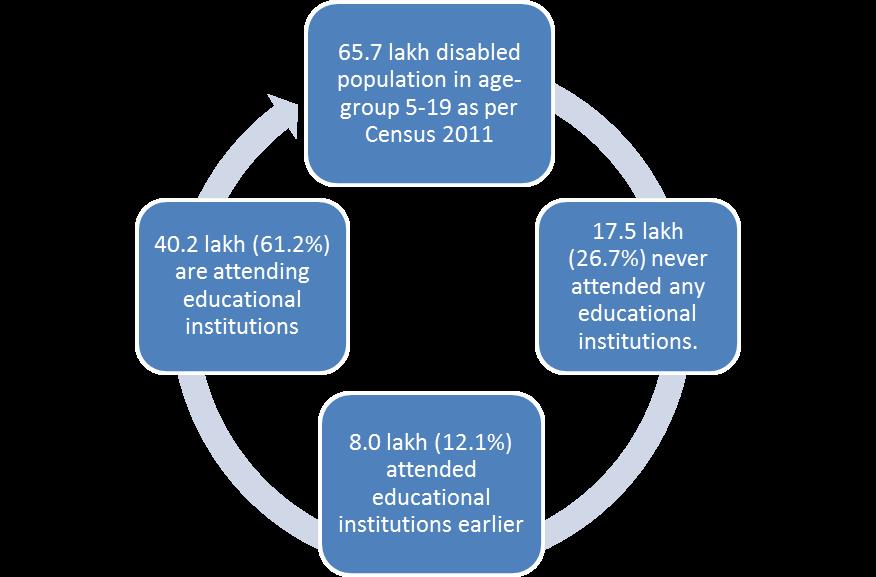
Scheme for Implementation of Persons with Disability Act (SIPDA)
The government has been making allocations every year to run various programmes for implementation of provisions of the Persons with Disability Act.
Under SIPDA, grants-in-aid are given to State Governments and various other bodies set up by the Central and State Governments, which includes Autonomous Bodies and Universities, with an aim to:
- Provide barrier-free environment in important government buildings (for example, ramps, rails, lifts, toilets, Braille signage and auditory signals, tactile flooring, etc.)
- Make Government websites at the State and District levels accessible to PwDs.
- Set up early Diagnostic and Intervention Centres at district headquarters.
- Offer Skill Development Programmes for Persons with Disabilities.
- Offer one-time grants to State Governments for providing infrastructural facilities to Offices of State Commissioners for Persons with Disabilities.
SIPDA during the last three years:
| 2014-15 (₹ in crores) |
2015-16 (₹ in crores) |
2016-17 (₹ in crores) |
2017-18 (₹ in crores) |
|
| Funds Allocated | 71.00 | 118.00 | 193.00 | 207.00 |
As per a Parliamentary Question answered in the Lok Sabha, in 2016-17, only ₹10.55 crore were released, which was a minuscule 5.4 % of the budgetary allocation, and even out of that, up till November, 2016, no amount was utilized. It is further interesting to note that out of 107 proposals received in 2016 from all the states for undertaking various projects under SIPDA, the government has only sanctioned 51 projects. This explains the under-utilization of funds. Moreover, many states like Bihar, Goa, and Haryana seem to have received no funds under this scheme for the last three years, despite submitting proposals.
Many other states have seen fluctuations in funds released, like the State of Madhya Pradesh (incidentally also the state which submitted the maximum number of proposals in 2016), which received ₹760 lakh in 2014-15 and only ₹18 lakh in 2015-16.
In 2016, the government also launched the ‘Accessible India’ Campaign, which found no mention in the 2017 budget speech.
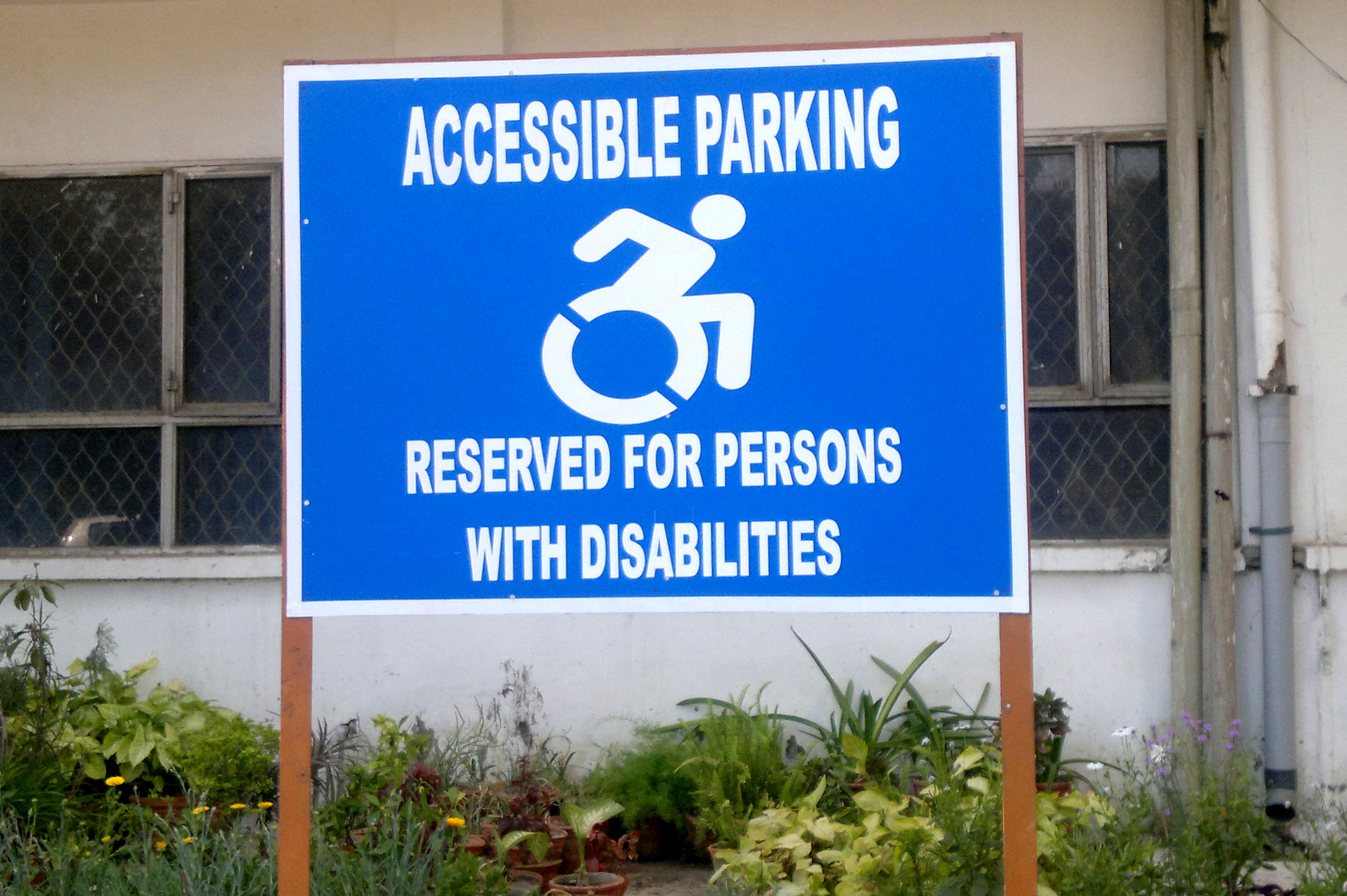
One of the more prominent programmes under SIPDA are the Skill development initiatives. As per its Outcome Budget, the government intends to skill 2.5 lakh individuals this year. But from the table presented below, we see that the number of beneficiaries covered in the last three years, and the funds utilized for the same, need to be increased manifold if this target it to be achieved by the designated timeline. Further, from a question answered in Parliament, 77 proposals under the Skill Development Scheme were received in 2016-17 from various states, out of which only eight proposals were sanctioned.
| Year | Amount Released | Number of Beneficiaries for which funds released |
| 2013-14 | ₹36.38 lakh | 570 |
| 2014-15 | ₹1022.94 lakh | 9,000 |
| 2015-16 | ₹2203.72 lakh | 28,042 |
| 2016-17 (upto 24.11.2016) | ₹75.11 lakh | Not available |
| 2017-18 | Not available | 2,50,000 (intended target) |
Medical assistance schemes
The government also allocates an annual (substantial) amount to provide for medical assistance of differently-abled people through various schemes. The details are given below:
(in crores)
| Budgetary Allocation 2014-15 |
Budgetary Allocation 2015-16 |
Budgetary Allocation 2016-17 |
Budgetary Allocation 2017-18 |
|
| Support to National Institutes (Blind, Deaf, Mentally Retarded, Orthopaedically Handicapped) | 147.16 | 153.84 | 175.74 | 190.02 |
| National Trust for Welfare (Persons with Autism, Cerebral Palsy, Mental Retardation and Multiple Disabilities) | —- | —- | 5.00 | 15.22 |
| Aids and Appliances for the Handicapped (ADIP) | 98.00 | 112.95 | 130.00 | 150.00 |
| Research on Disability related Technology Products and Issues | —- | —- | 0.40 | 1.00 |
| Deendayal Disabled Rehabilitation Scheme (DDRS) | 80.00 | 54.00 | 45.00 | 60.00 |
| Setting up of State Spinal Injury Centres | —- | —- | 4.00 | 5.00 |
| Indian Spinal Injury Centre | —- | —- | 2.00 | 2.00 |
The DDRS scheme aims to strengthen district-level grassroot infrastructure to provide comprehensive services to differently abled-people. The scheme uses awareness generation, rehabilitation, and training of rehabilitation professionals. Out of 2016-17’s allocated ₹45 crore, until November 2016, governments utilized more than half (₹25 crore) across different states.
Surprisingly, out of 377 proposals received in 2016-17, until November 2016, the government hadn’t sanctioned even one proposal. It seems that the 190 proposals sanctioned in 2015-16 utilized the ₹25 crore.
Further, in 2014-15 and 2015-16, the government has been consistent in spending about ₹50 crore. But the number of organizations receiving this grant came down from 640 in 2014-15 to 589 in 2015-16.
It seems that the 2017 budget is more likely to be for maintaining existing infrastructure rather than creating new ones.
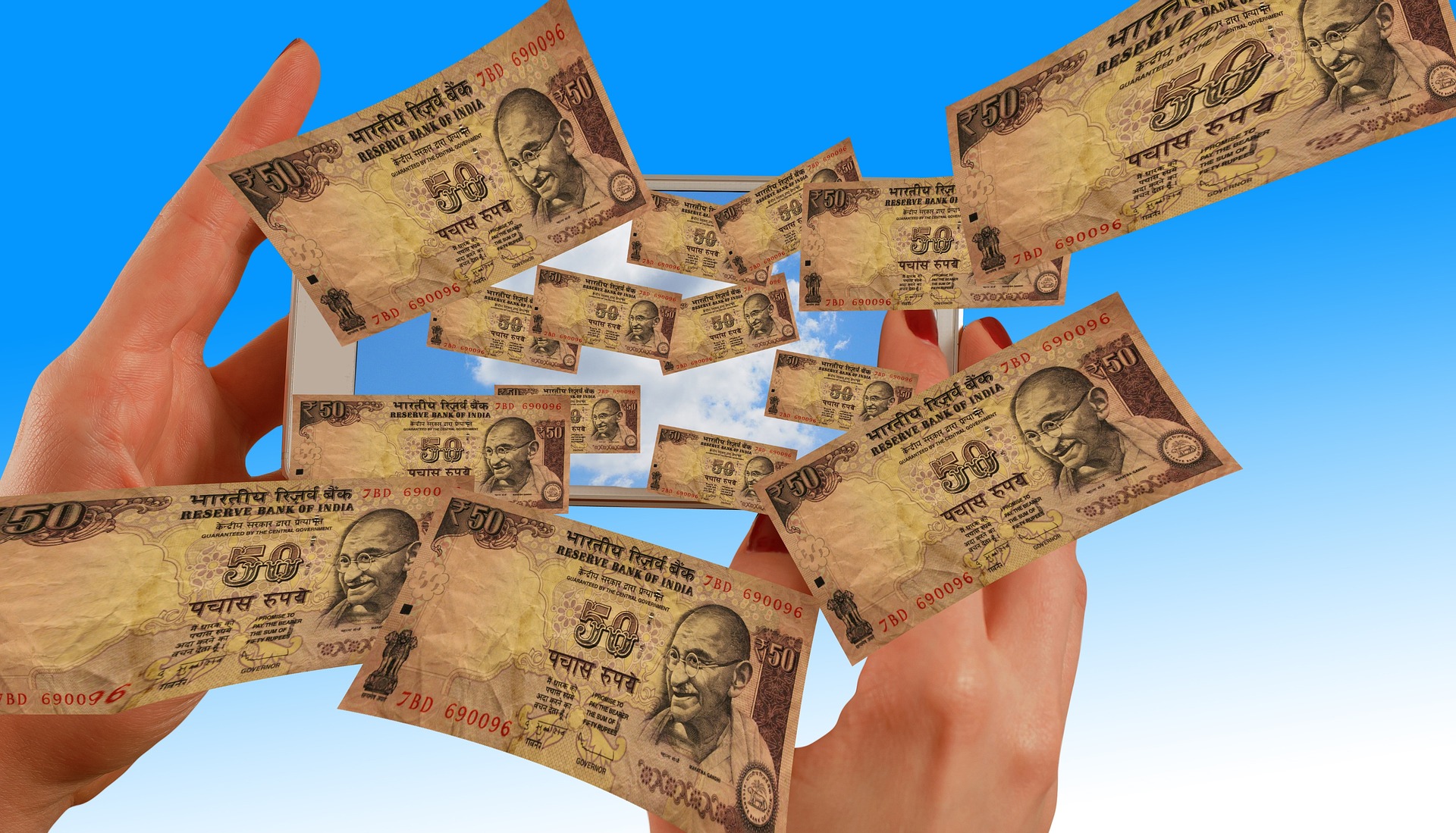
Under the ADIP Scheme, implementing agencies receive grants to assist needy differently-abled people. These help them procure aids and appliances which can reduce their disability and increase their economic potential. Just like DDRS, the majority of the funds allocated for this scheme run existing programmes. There is very little addition in terms of new programmes.
In fact, as on November, 2016, the government had already utilized ₹97 crore of the ₹130 crore allocated in 2016. However, it managed to sanction only one new proposal out of 84 received during the year from different states.
Also, despite a consistent annual increase in funds for this scheme, the number of beneficiaries affected has consistently reduced.
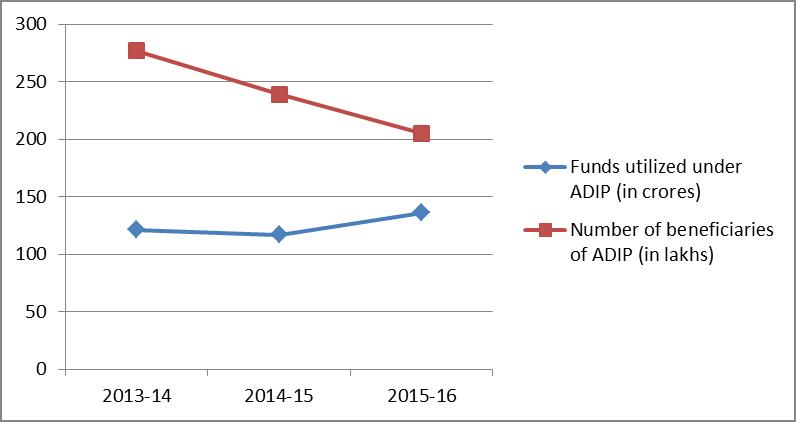
Tax Deduction under Section 80DD
If a taxpayer has dependent parents, spouse, children, or siblings who are differently-abled, he/she can claim deductions. These can be up to ₹75,000 for expenses on their maintenance and medical treatment under this section. This deduction can increase to ₹1.25 lakh in case of severe disability. This is a positive step towards assimilation of differently-abled people by encouraging people to invest in their well-being.
Conclusion
Overall, the increase in budgetary allocation doesn’t seem to translate into equivalent increase in action and infrastructure on the ground. The government needs to increase its budgetary allocation, along with maintaining decent utilization, in order to make a dent.
If you have any inputs on the above analysis that you’d like to get to MPs, fill an online form here.
Featured Image is for representational purpose only. (Source: By Department of Foreign Affairs and Trade (Disability Rights Fund) [CC BY 2.0], via Wikimedia Commons)
Like this story? Or have something to share? Write to us: [email protected], or connect with us on Facebook and Twitter.
NEW: Click here to get positive news on WhatsApp!
If you found our stories insightful, informative, or even just enjoyable, we invite you to consider making a voluntary payment to support the work we do at The Better India. Your contribution helps us continue producing quality content that educates, inspires, and drives positive change.
Choose one of the payment options below for your contribution-
By paying for the stories you value, you directly contribute to sustaining our efforts focused on making a difference in the world. Together, let's ensure that impactful stories continue to be told and shared, enriching lives and communities alike.
Thank you for your support. Here are some frequently asked questions you might find helpful to know why you are contributing?


This story made me
-
97
-
121
-
89
-
167














